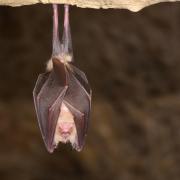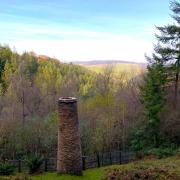When passing through the towering cliffs of Cheddar Gorge, look up, and you may be lucky enough to see tiny specks of bright pink clinging to the high ledges. This could possibly be the elusive cheddar pink.
In 2002, Plant Life appointed a flower to each county of England, with the cheddar pink being named the county flower of Somerset; it is also one of the eight Champion Species of the Mendip Hills National Landscape. This small pink, frilly-edged flower, just two centimetres in diameter that flowers from late May through July is found in limestone landscapes all over Europe. In Britain, it’s found almost exclusively in Cheddar Gorge. The primary habitat of the cheddar pink is the rocky southern-facing limestone grassland slopes and cliff edges of the gorge. The scientific name of the cheddar pink is Dianthus gratinopolitanus, which is roughly translated to mean “divine flower” in Greek, dios meaning divine and Anthos meaning flower. This relates to the delicate beauty of the flowers and their perfume, which has been likened to the smell of cloves.
These beautiful plants are classed as vulnerable on the Red List of endangered species, primarily due to a mix of climate change, habitat loss and the collection of plants by unscrupulous gardeners. At one point, most gardens in the Cheddar Valley would have had a cheddar pink in a little rocky border; I know my gran did, as did all her neighbours; it was just what happened, but sadly, these plants would hybridise making the pure population even smaller.
Their fragile habitats are threatened by shading from scrub, overgrazing and other climatic and human factors, so organisations, including The National Trust and The Mendip Hills National Landscape plan their nature recovery work to help with this. The Mendip Hills National Landscape has chosen the cheddar pink as one of its champion species. By doing this, they can focus Nature Recovery work on specific species and habitats, being able to see qualitative results. The thinking is that if you improve the habitat for one indigenous species, then all the other plants and animals that have similar habitat requirements will also benefit.
The other champion species are the adder, the black oil beetle, the water vole, the small pearl-bordered fritillary, the skylark, the hazel dormouse and the greater horseshoe bat. Each of these amazing species has been chosen to allow the National Landscape team to undertake targeted nature recovery work in specific habitats and locations. The skylark requires a focus on open areas of grassland, the hazel dormouse requires very specific woodland management, and the greater horseshoe bat requires the conservation of caves, old buildings, and mature trees as well as the open grassland and woodland edges where they hunt at night. Focusing on these specific species and their precise requirements has helped the National Landscape team produce their nature recovery plan to better understand the best ways to conserve and enhance the Mendip Hills for these and all other local species.
The Mendip Hills National Landscape team have recently produced a series of eight short films on all eight champion species, including the cheddar pink. These films, presented by TV naturalist Mike Dilger, are available to watch at mendiphills-nl.org.uk



























